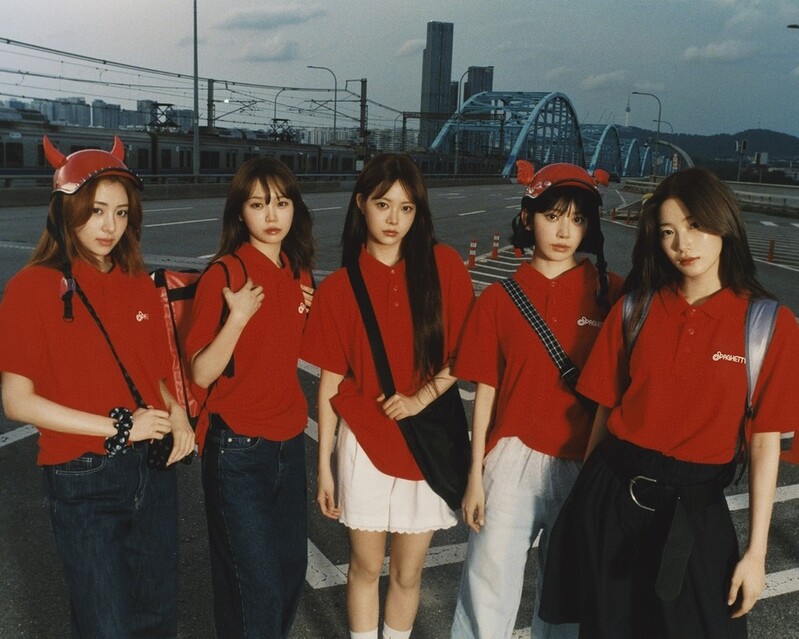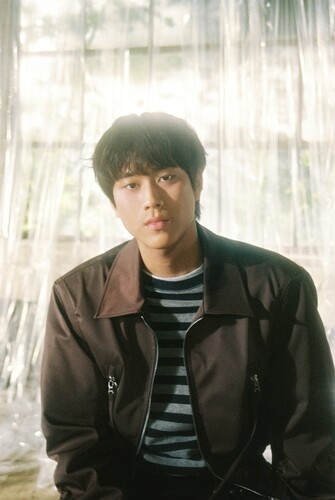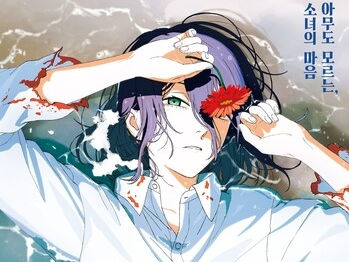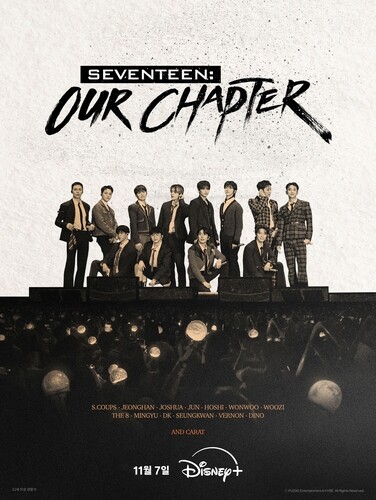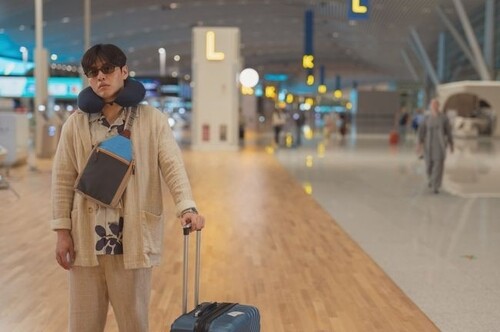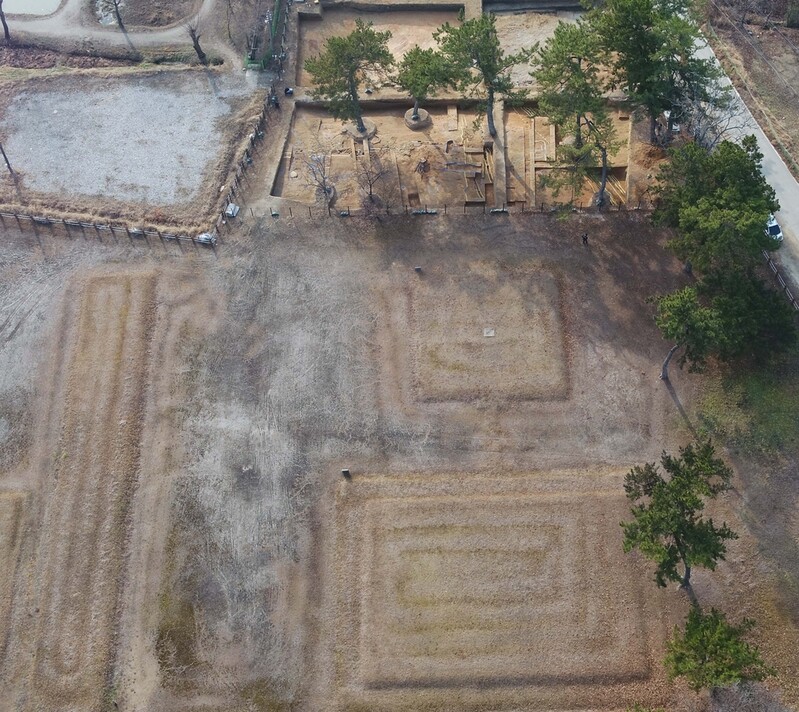 |
▲This photo, provided by Cultural Heritage Administration, shows Temple Site in Gunsu-ri. (PHOTO NOT FOR SALE) (Yonhap)
|
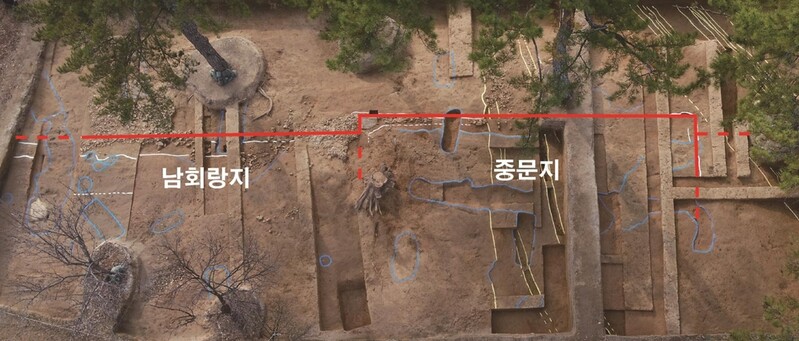 |
▲This photo, provided by Cultural Heritage Administration, shows the middle gate and the southern foundation of the Temple Site in Gunsu-ri(PHOTO NOT FOR SALE) (Yonhap)
|
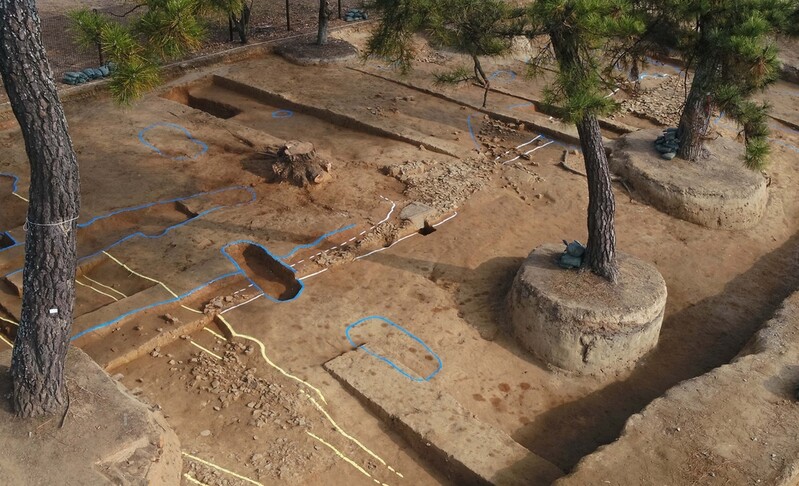 |
| ▲This photo, provided by Cultural Heritage Administration, shows the middle gate of the Temple Site in Gunsu-ri(PHOTO NOT FOR SALE) (Yonhap) |
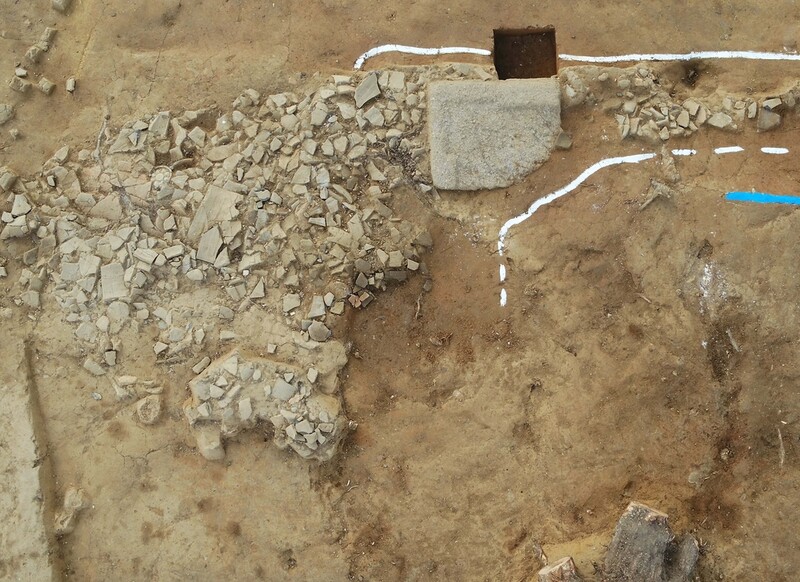 |
| ▲This photo, provided by Cultural Heritage Administration, shows the foundation stone of the middle gate, Temple Site in Gunsu-ri(PHOTO NOT FOR SALE) (Yonhap) |
SEOUL, December 14 (Yonhap) -- During 538-660 AD, when Baekje had a capital in Buyeo, traces of a building that could determine the size of the Buyeo Gunsuji Temple, which is considered a major temple site, were confirmed.
The Cultural Heritage Administration announced on December 14 that it has newly identified the middle gate and the southern gallery as a result of excavating and investigating Buyeo Gunsu-ri Temple Site in Buyeo with the Korea National University of Cultural Heritage and Buyeo-gun, Chungcheongnam-do.
Buyeo Gunsu-ri Temple Site is the temple site of Baekje, and the exact name of the temple is not known.
In 1935-1936 during the Japanese colonial period, the site of the wooden pagoda, the main prayer hall, and the lecture hall in the temple were investigated, and gilt-bronze standing Bodhisattva wearing a fancy crown, stone seated Buddha, tiles and more were excavated.
Later, in 2005-2007 and 2011, additional investigations were conducted on the shape of the stupas and buildings in the temple, but the location of the middle gate was estimated, but nothing was perfectly identified.
However, the Cultural Heritage Administration announced that they identified the location and size of the middle gate through the investigation done this time.
Jungmun is a gate built inside the main gate. In temples, it is usually built in front of the central building and connected to the corridor on the left and right.
The investigation team found a foundation stone and tile that were built with stones higher than the site after the site was built at a corner about 25m south of the center of the wooden pagoda site where various relics were excavated in the past.
An official from the Cultural Heritage Administration said, "The size of the base of the middle gate is estimated to be about 14 meters long, east-west," adding, "For the first time, we have identified the exact location and size of the middle gate site."
Parts of foundation stones and tiles were also found at the site of the long shaped gallery.
The Cultural Heritage Administration explained, "We also found some of the southern foundation stones and tiles lying in piles, at the southern gallery, it seen that the gallery with a narrower foundation than the middle gate seems to have continued about 10m east of the middle gate,"
However, it was confirmed that the western part of the middle gate and the southern gallery was severely damaged by the roads built during the Baekje period.
The structure and the shape of the foundation is also interesting.
The foundation stone of the middle gate is an L-shaped corner long foundation stone (a stone placed at the bottom to increase the force to support the load), and it is believed that the top of it has a bump and is equipped with a stone corner pillar (a pillar stone built on the corner).
It is explained that it seems to be a "furniture-style" foundation structure with a a flat stone laid on another stone. The furniture-style foundation structure refers to a foundation made of stone as if weaving wooden furniture.
This is different from the wooden pagoda and the main prayer hall which were identified in the previous investigation, made by building or stacking bricks or tiles.
The Cultural Heritage Administration emphasized, "The main gate and the gallery is a very important data to understand the scope and size of the central ministry of Gunsu-ri Temple Site, a temple located inside Sabidoseong Fortress in Baekje."
The Cultural Heritage Administration will establish maintenance and management measures in the future based on the results of this examination.
(This article is translated from Korean to English by Dowon Kim.)
(END)
(C) Yonhap News Agency. All Rights Reserved









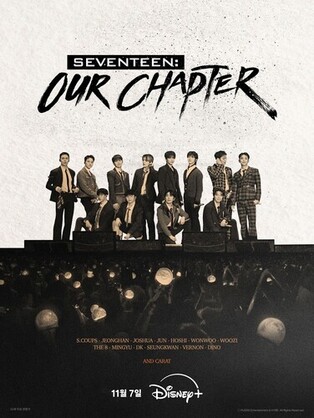


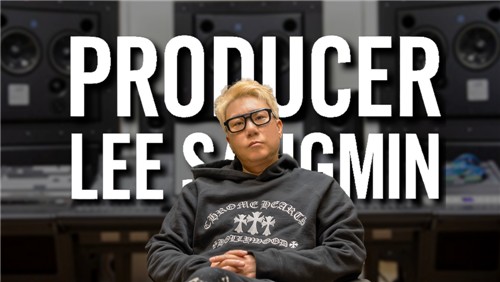
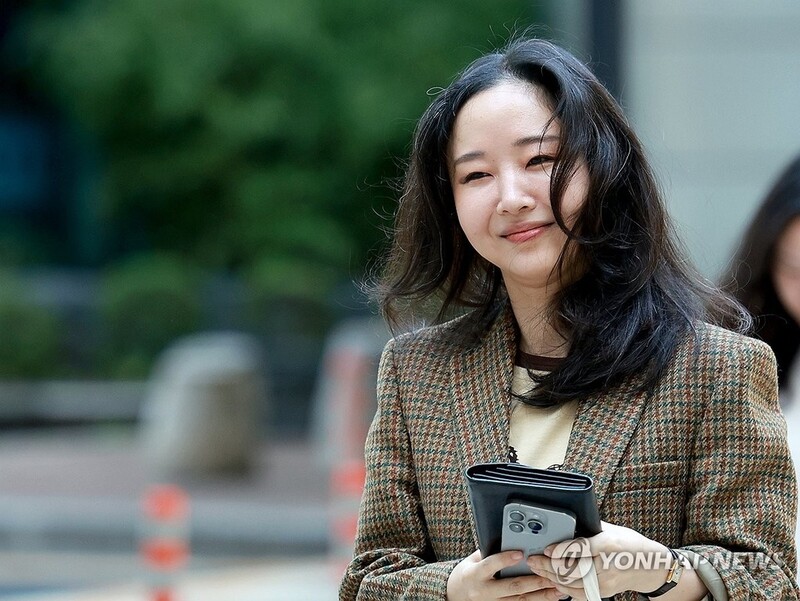
![[방송 소식] MBC 대학가요제 13년 만에 부활…26일 방송](https://korean-vibe.com/news/data/20251024/yna1065624915904676_716_thum.jpg)
![[신간] 레넌과 매카트니는 경쟁자였을까…'존 앤드 폴'](https://korean-vibe.com/news/data/20251024/yna1065624915904305_293.jpg)
